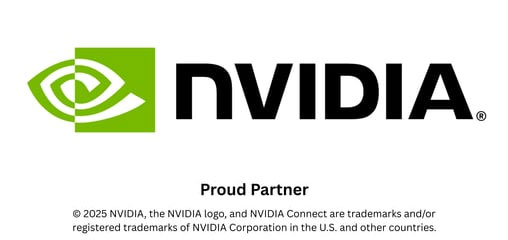Digital sovereignty has become the rallying cry of European policymakers, but for most business leaders, it remains frustratingly abstract. We hear about data residency, regulatory compliance, and technological independence – yet when it comes to practical implementation, the guidance often stops at policy papers and boardroom presentations.
Having spent considerable time examining how European businesses actually implement AI systems that meet sovereignty requirements, I’ve observed a significant gap between regulatory intentions and operational reality. The challenge isn’t just understanding what digital sovereignty means – it’s building systems that deliver it without compromising on capability or commercial viability.
What Digital Sovereignty Actually Looks Like
Digital sovereignty goes beyond technology and data regulation to include fostering entrepreneurship and funding innovation, as the World Economic Forum noted in its recent analysis. But this definition, whilst accurate, doesn’t help a German dental clinic company understand how to implement AI-driven customer service whilst keeping sensitive customer data within EU borders.
The practical reality is more nuanced. True digital sovereignty requires control across what experts call the “three layers”:

- the physical infrastructure where data lives,
- the software standards that govern how it’s processed,
- and the actual data flows themselves.
For most European SMBs, this translates to a fundamental architectural decision: To build AI capabilities that genuinely keep your data under your control and within EEA jurisdiction, or to accept the compromises and compliance infringements that come with cloud-based API services.
The Architecture Challenge
Consider a typical AI implementation today. A company uploads documents to a cloud-based service, which processes them through models hosted on servers in multiple jurisdictions, returning insights generated from data that has travelled thousands of kilometres. This approach works brilliantly for functionality, but creates what I call “sovereignty leakage” at every step.
The EU has established a comprehensive legal framework for AI with two key pieces of legislation: the AI Act, which is now in force, and the proposed AI Liability Directive, according to recent analysis of compliance frameworks. But legislation alone doesn’t solve the technical challenge of building AI systems that actually comply with these requirements whilst remaining commercially viable.
The alternative architecture – local deployment of AI models with private data processing – has historically required enterprise-scale budgets and technical expertise. This created a sovereignty gap: Large corporations could afford compliant AI, whilst smaller businesses had to choose between capability and compliance.
The Retrieval-Augmented Generation Solution

This is where recent advances in AI architecture become genuinely interesting for European businesses. Retrieval-Augmented Generation (RAG) systems, when properly implemented with local large language models, offer a path to genuine digital sovereignty without sacrificing AI capabilities.
The concept is straightforward: Instead of sending your queries to external services, you run the AI model locally, feeding it information from your own controlled knowledge base. Your data never leaves your infrastructure. The model operates within your jurisdiction. You control every aspect of the processing pipeline.
The practical implementation, however, requires careful consideration of model selection, hardware requirements and operational complexity. Modern mixture-of-experts models can deliver substantial AI capabilities whilst running on surprisingly modest hardware. Often, a single high-performance server can handle the AI inference needs of a mid-sized business, reducing the hardware costs required to run a functioning LLM on dedicated infra significantly and creating an opportunity for compliance for SMBs, when previously the mere hardware requirements alone made it practically impossible for SMBs to deploy.
Real-World Implementation Considerations
From a practical standpoint, businesses implementing sovereign AI architectures face several key decisions:
- Infrastructure Placement: Where do you locate your servers? EU-based hosting with a European provider (not a US company or a subsidiary) provides regulatory certainty, but specific jurisdictions matter, too. The EU’s digital sovereignty agenda aims to reduce reliance on foreign technology, enhance infrastructure and address privacy concerns, but implementation details vary significantly between member states.
- Model Selection: Which AI models provide the capabilities you need whilst being suitable for local deployment? The choice affects everything from hardware requirements to fine-tuning possibilities. This is more than just picking the engine; this affects everything from User Experience to hallucinations.
- Data Management: How do you structure your knowledge base to maximise AI effectiveness whilst maintaining clear data lineage and control? This isn’t just a technical question; it requires understanding how your business actually uses information.
- Operational Resilience: How do you maintain, update and scale a locally-deployed AI system without the convenience of cloud-managed services? This includes everything from model updates to hardware maintenance.
The Business Case for Sovereign AI
The surprising development is that sovereign AI implementations often deliver commercial advantages beyond compliance. Predictable costs replace variable API billing. Response times improve when you’re not dependent on external services. You can customise and fine-tune models for your specific use cases without exposing proprietary data. And your LLM won’t vanish overnight, like just happened with OpenAI’s 4.x models. The biggest single factor, however, is the trust you will gain from your customers and cooperation partners – you can then confidently say your business is compliant, and the data will never leave your infrastructure.
The evolving geopolitical landscape, coupled with internal EU policy shifts and the implementation of the Cyber Resilience Act (CRA), will make this a defining year for Europe’s digital future, as recent analysis suggests. But the opportunity extends beyond regulatory compliance – businesses implementing sovereign AI architectures are often discovering competitive advantages they hadn’t even anticipated.
Looking Forward
The technical barriers to digital sovereignty in AI are diminishing rapidly. What remains is the gap between policy intentions and practical implementation guidance. European businesses need clear pathways to AI capabilities that genuinely meet sovereignty requirements without requiring enterprise-scale resources.
The companies that solve this implementation challenge first will likely define how European business adopts AI over the next decade. It’s not enough to talk about digital sovereignty – we need to build it, deploy it, and prove it works in commercial reality. Within European borders and jurisdiction.
The conversation is shifting from whether European businesses should pursue digital sovereignty to how they can implement it effectively. That’s the kind of practical progress that might actually deliver on the policy promises we’ve been hearing for years.
Victor A. Lausas
Chief Executive Officer
Subscribe to North Atlantic’s email newsletter and get your free copy of my eBook,
Artificial Intelligence Made Unlocked. 👉 https://www.northatlantic.fi/contact/
Discover Europe’s best free AI education platform, NORAI Connect, start learning AI or level up your skills with free AI courses and future-proof your AI knowledge. 👉 https://www.norai.fi/






